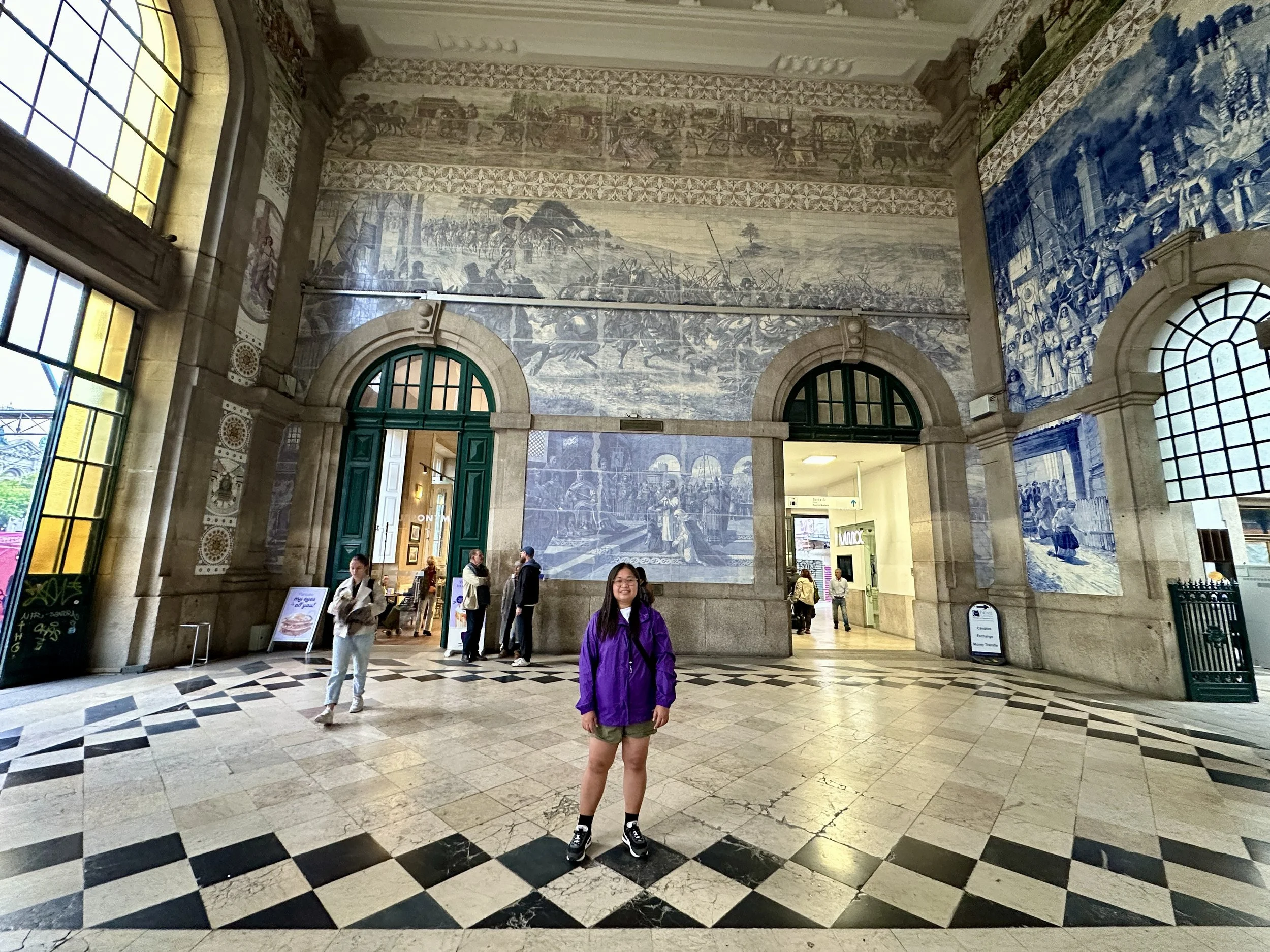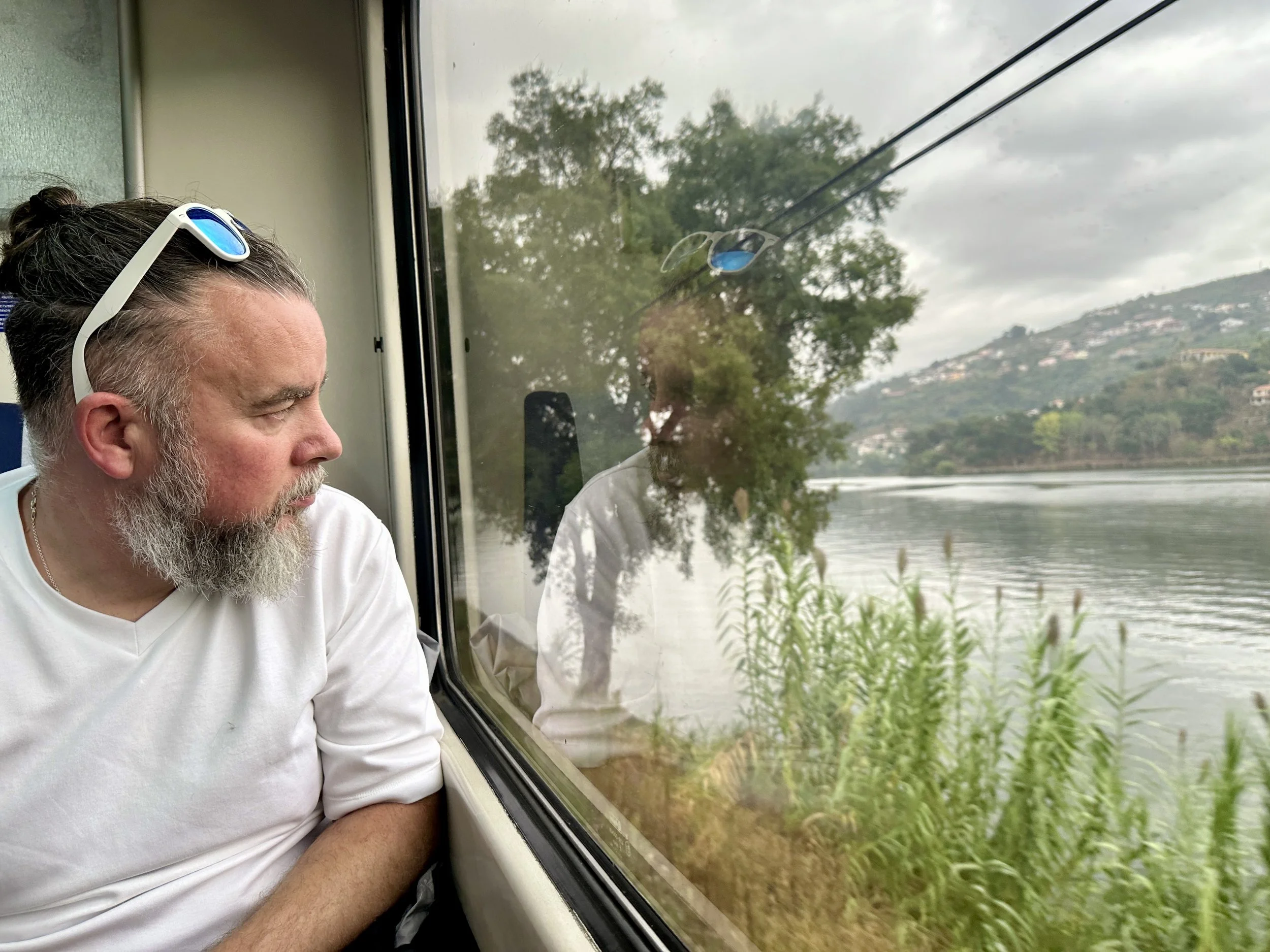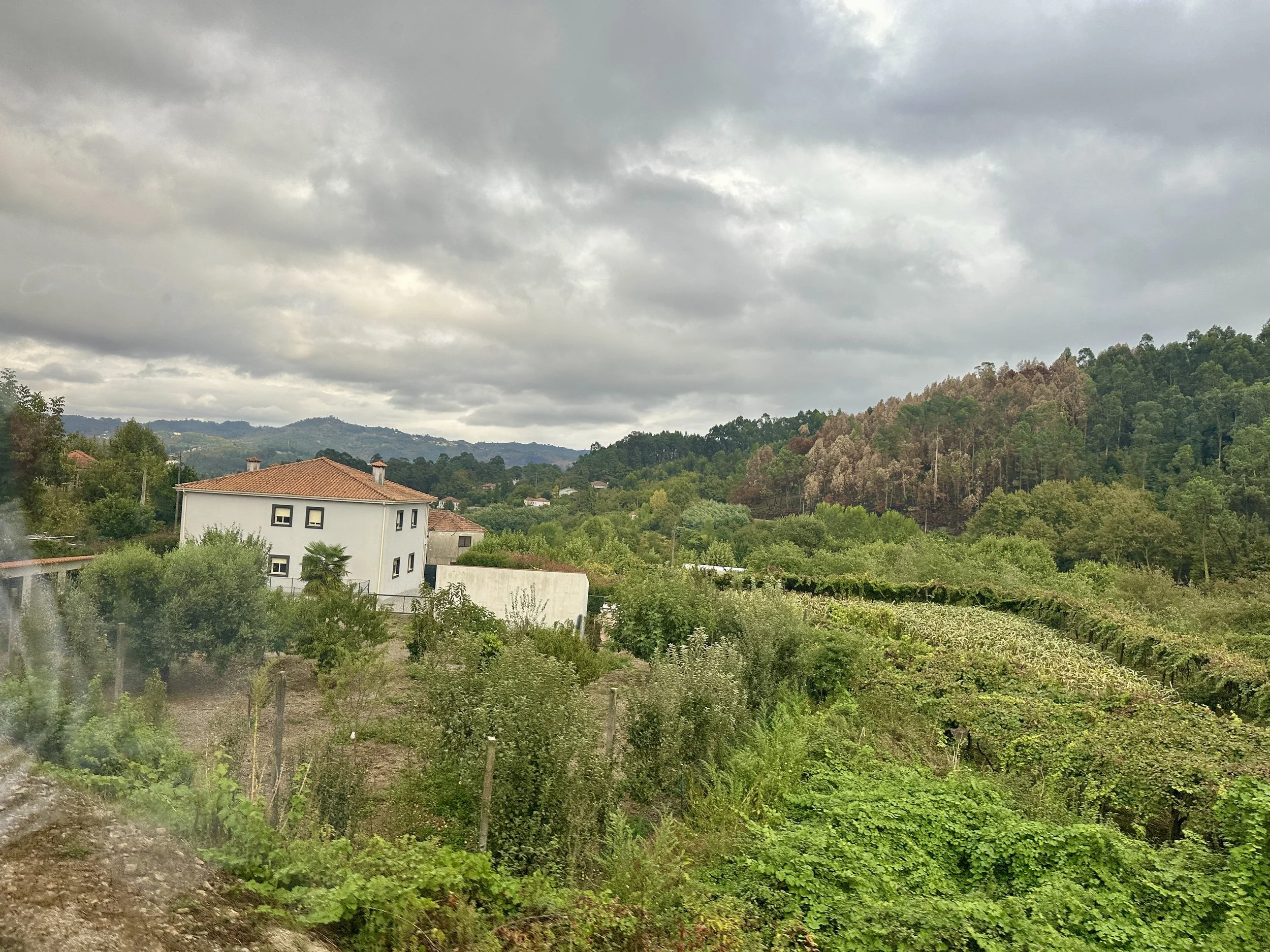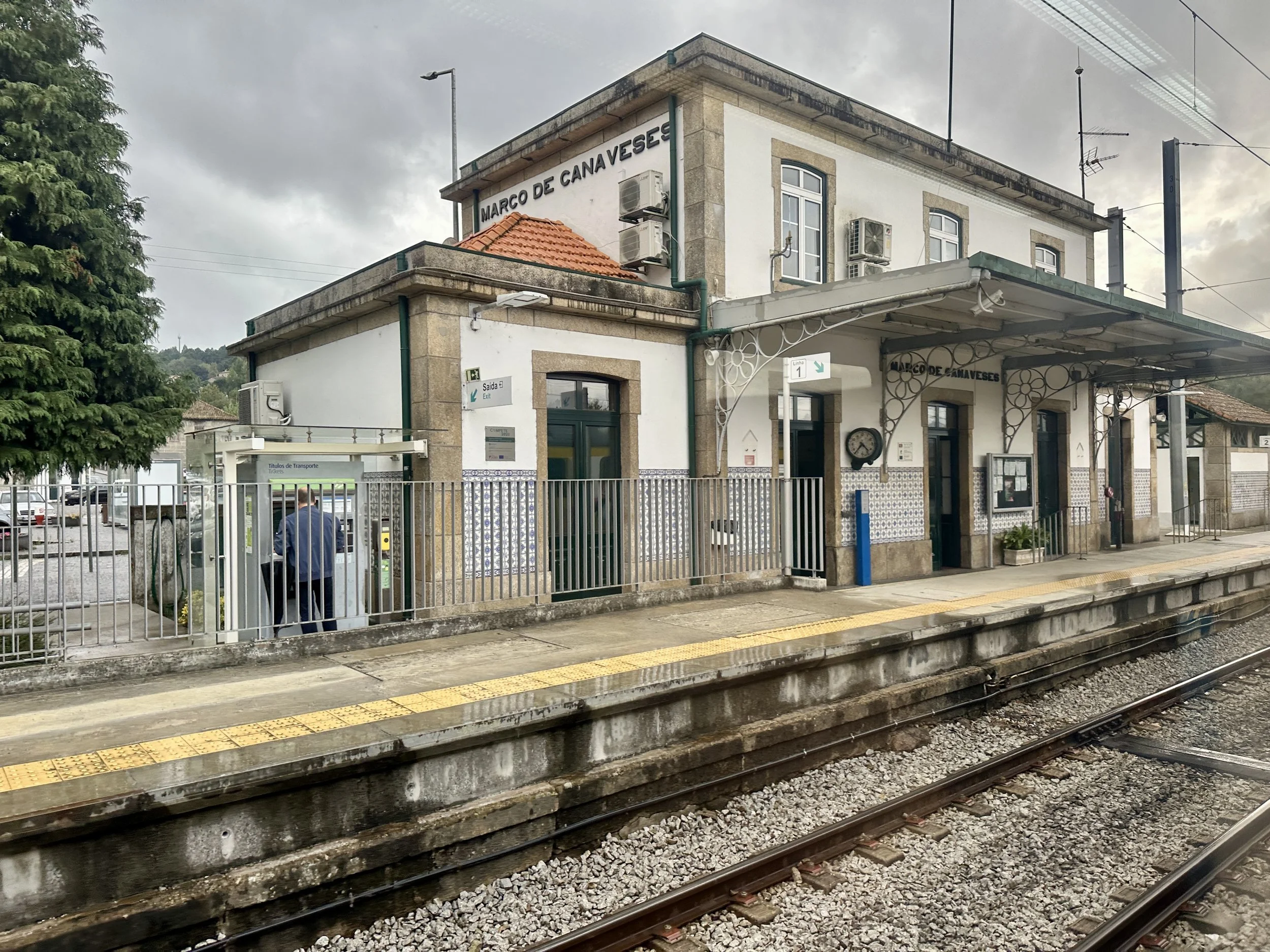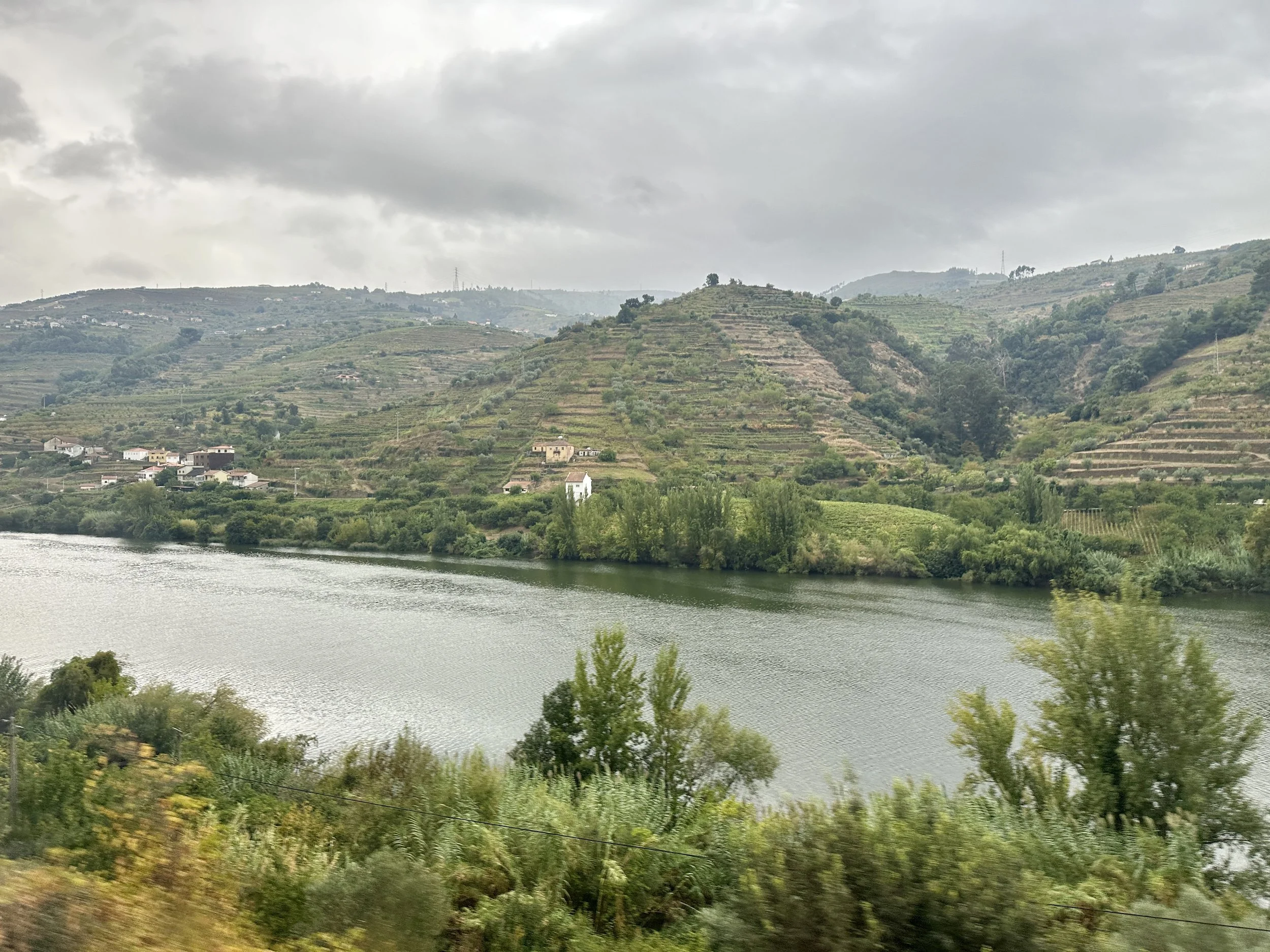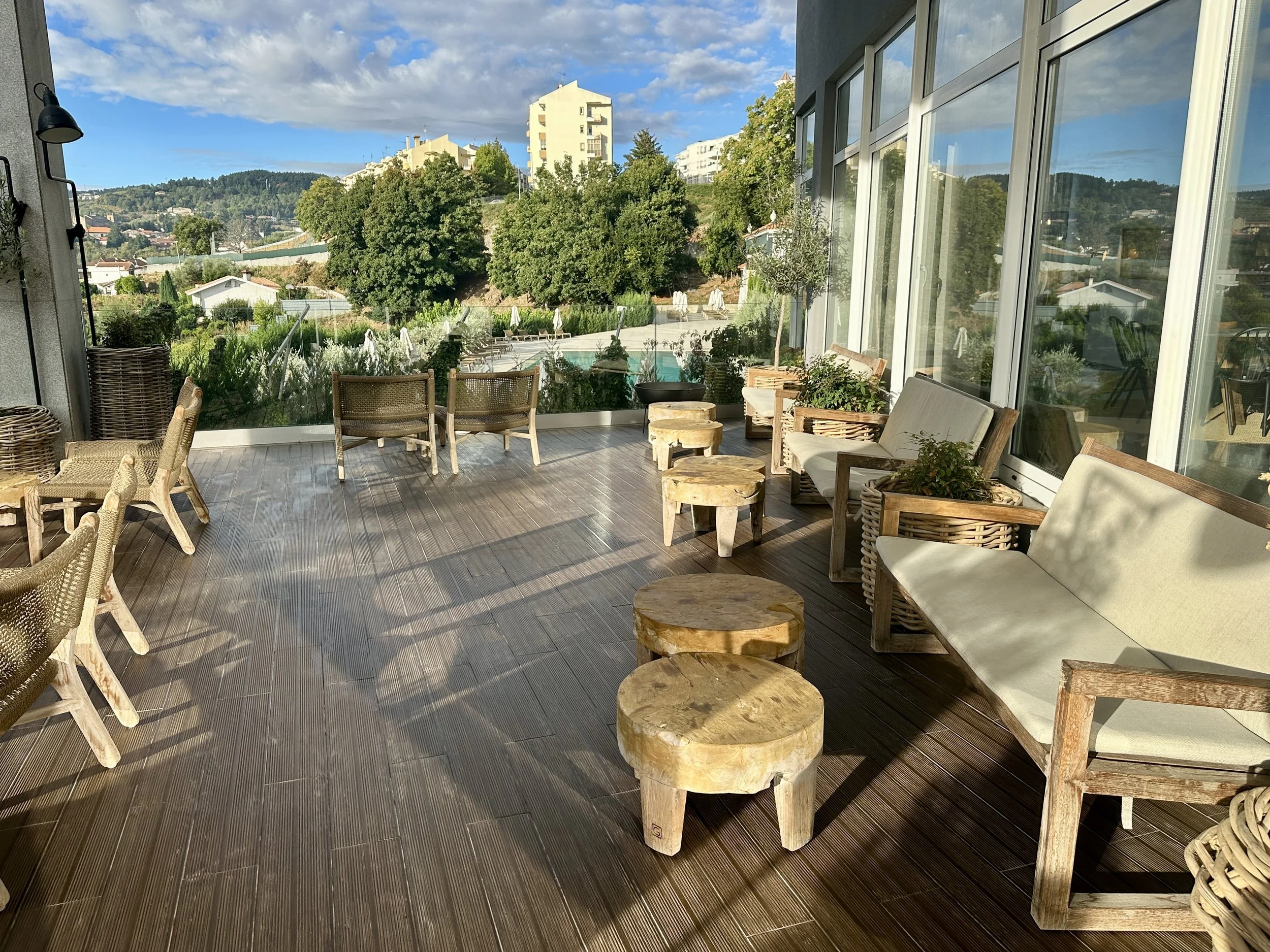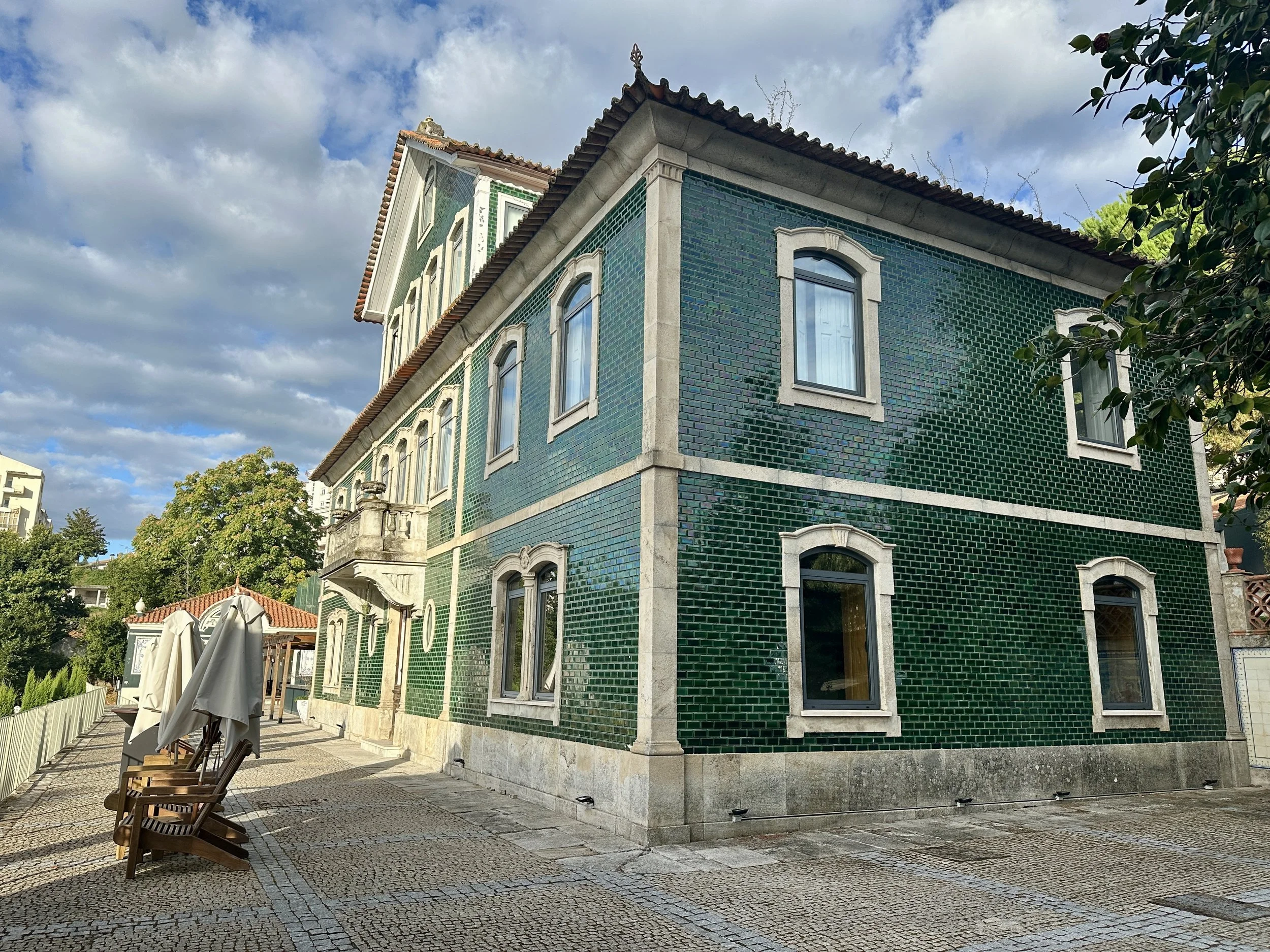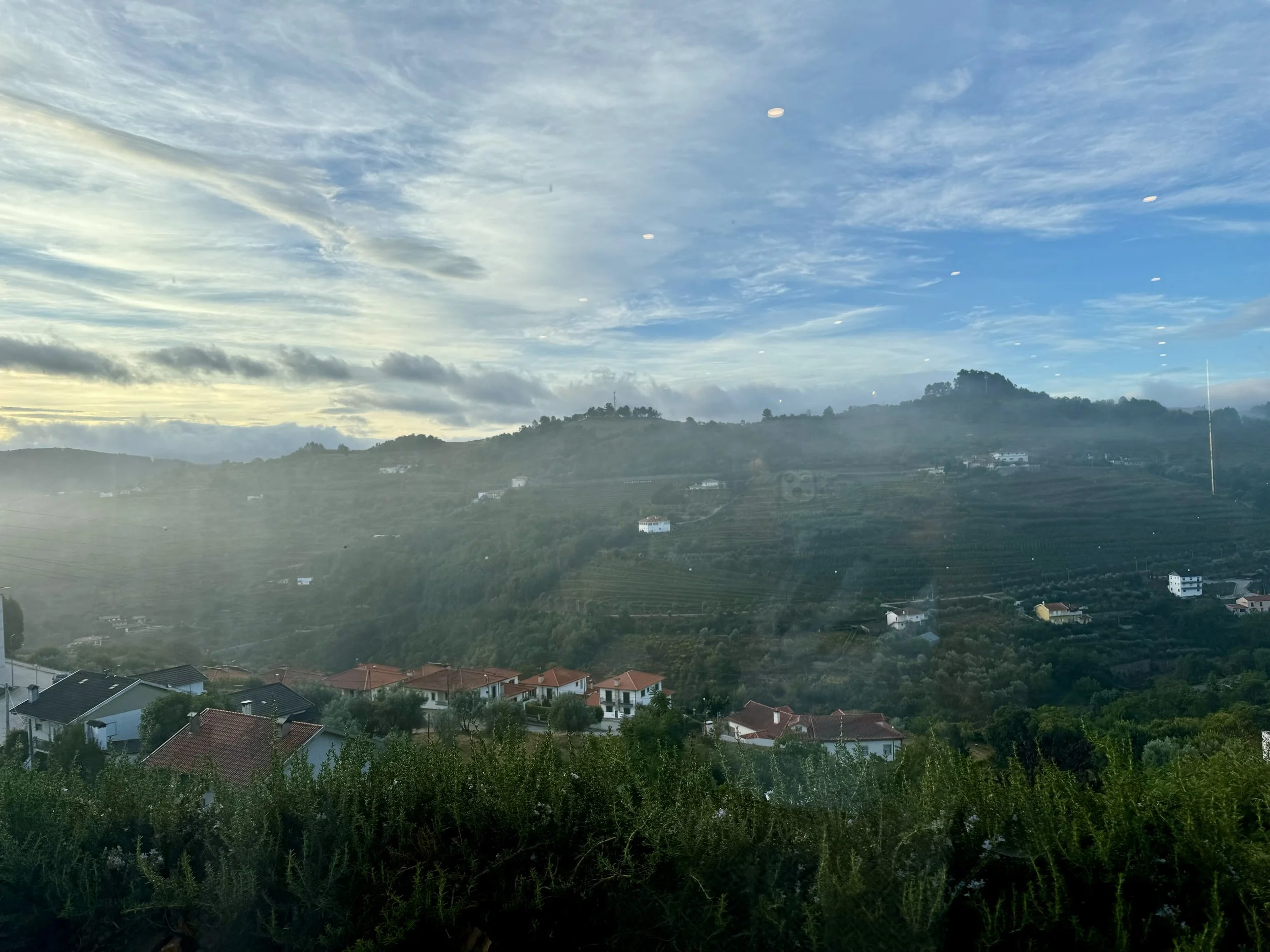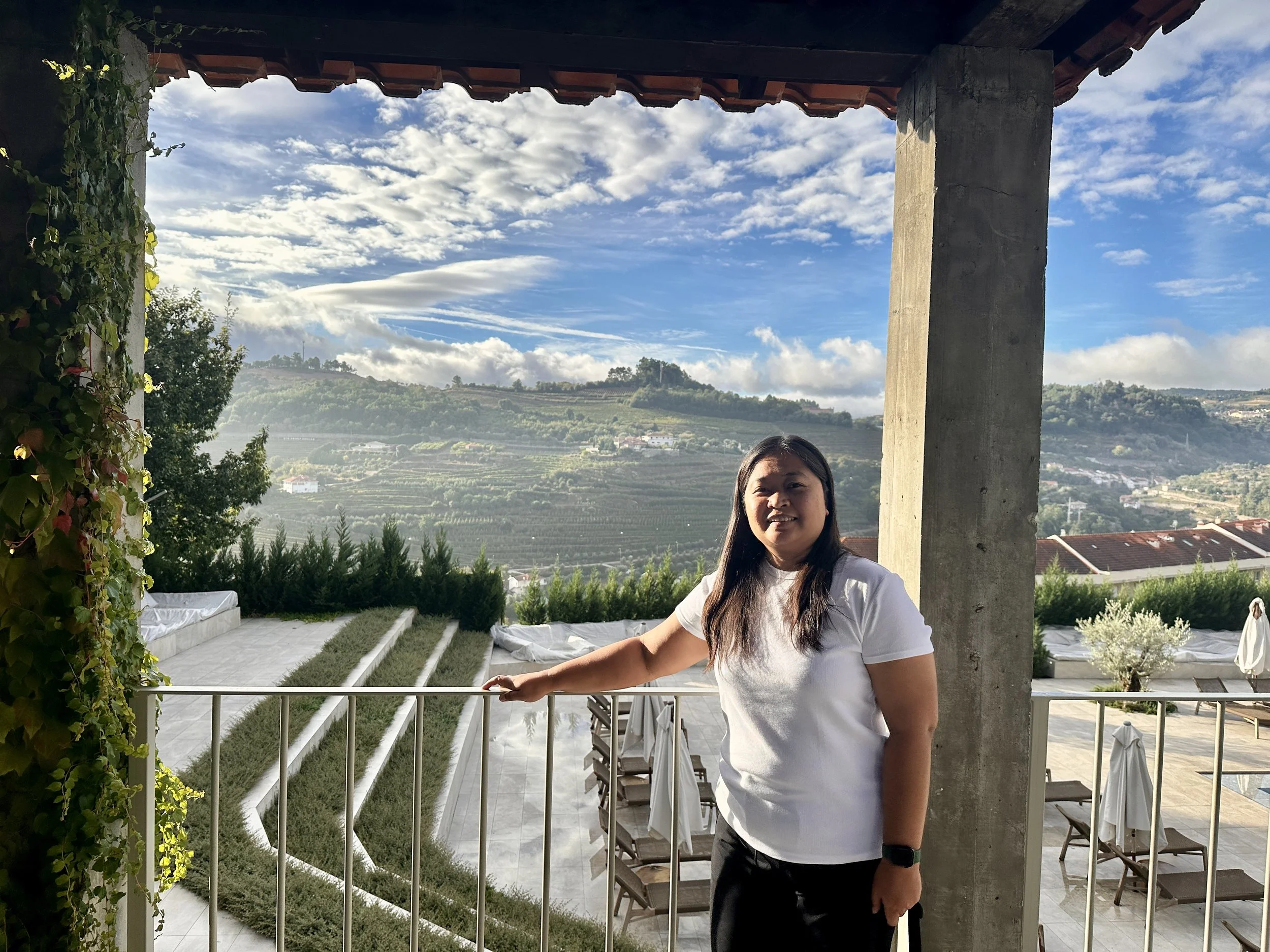Douro Valley Train Ride from Porto to Peso da Régua
We caught the train from São Bento station in Porto, the one with the famous azulejo tiles covering the walls. This wasn’t a DIY journey, it was part of our Explore group tour, so our leader sorted the tickets. That means I can’t actually tell you what the fare costs from São Bento to Peso da Régua, which is the main town in the Douro Valley. If you’re planning the trip on your own, you can check current prices and timetables directly on the official Comboios de Portugal website.
We set off after lunch, the rain still drizzling as we settled into our seats. I’d been looking forward to this train ride into the Douro Valley for weeks, but the weather clearly hadn’t got the memo.
We found seats on the right-hand side of the train, though our tour leader said the views are beautiful from either side. At first, we passed through the outskirts of Porto, with glimpses of apartment blocks, busy roads, and trams clattering along their tracks. Slowly, the city gave way to the lush green hills of the region, dotted with olive groves, vineyards, and small farms. The Douro River began to appear, winding alongside the tracks and reflecting the soft, misty light of the afternoon. Each bend revealed a new panorama, terraced vineyards climbing steep hillsides, tiny riverside villages with red-tiled roofs, and the occasional ancient stone bridge arching over the water.
Our eyes stayed glued to the windows all the way to Peso da Régua. The changing light, the textures of the hills, and the glimmering Douro made it feel like travelling through a living painting.
There were just seven of us travelling together in Portugal, three couples plus our tour leader, so the whole trip had a small, intimate feel. That came through on the train ride too, when one of the couples cracked open a bottle of port and passed it around in little chocolate cups. It felt both indulgent and perfectly fitting for a journey into wine country.
We arrived in Peso da Régua after the scenic train ride, the river and vineyards still lingering in our minds. From there, our transfer took us to Lamego Hotel and Life, a short drive through the Douro Valley. The ride itself was equally scenic, winding past vineyards and hills that seemed to climb straight out of the river.
The hotel was very comfortable and beautifully maintained, offering a perfect base for exploring the region. Unfortunately, the rain had intensified by the evening, so we didn’t get much of a chance to see the surroundings right away. But the next morning, the skies cleared enough for us to catch a stunning view of the Douro Valley stretching out below the hotel, a patchwork of vineyards, olive groves, and the glimmering river winding through the hills. It was a quiet, almost magical moment that made the journey all the more worthwhile.
The Linha do Douro (Douro Line) is renowned for its breathtaking scenery and historical significance. Running from Porto to Pocinho, this 160 km (99 miles) railway line offers passengers a unique perspective of northern Portugal's landscapes. The journey from Porto to Peso da Régua typically takes around 2 hours, providing ample time to soak in the views.
Traveling along the Douro River, the train passes through terraced vineyards, olive groves, and quaint villages, making it a favorite among photographers and nature enthusiasts. The route is particularly celebrated for its panoramic vistas and the opportunity to experience the region's rich cultural heritage.
The Douro Valley train ride may be brief, but it leaves a lasting impression. From the misty start in Porto to the sunlit vineyards seen from our hotel the next morning, every moment felt like a journey through a living postcard. Even with the rain threatening to dampen our day, the combination of winding rivers, terraced hills, and a little indulgence in port made the trip unforgettable. Whether you’re travelling independently or with a tour, the Linha do Douro offers a glimpse of northern Portugal that is hard to beat and one that stays with you long after the train has pulled into Peso da Régua.

